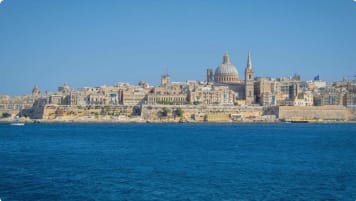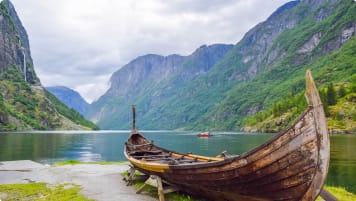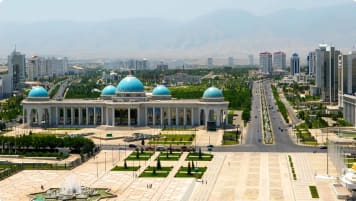Turkmenistan; journey for the curious
Turkmenistan: a journey for the curious Brimming with a vibrant population of around 5 million people, Turkmenistan is hospitable and welcoming to tourists, despite its history of political problems. Its vast landscape is mostly desert,…
9 May 18 · 9 mins read
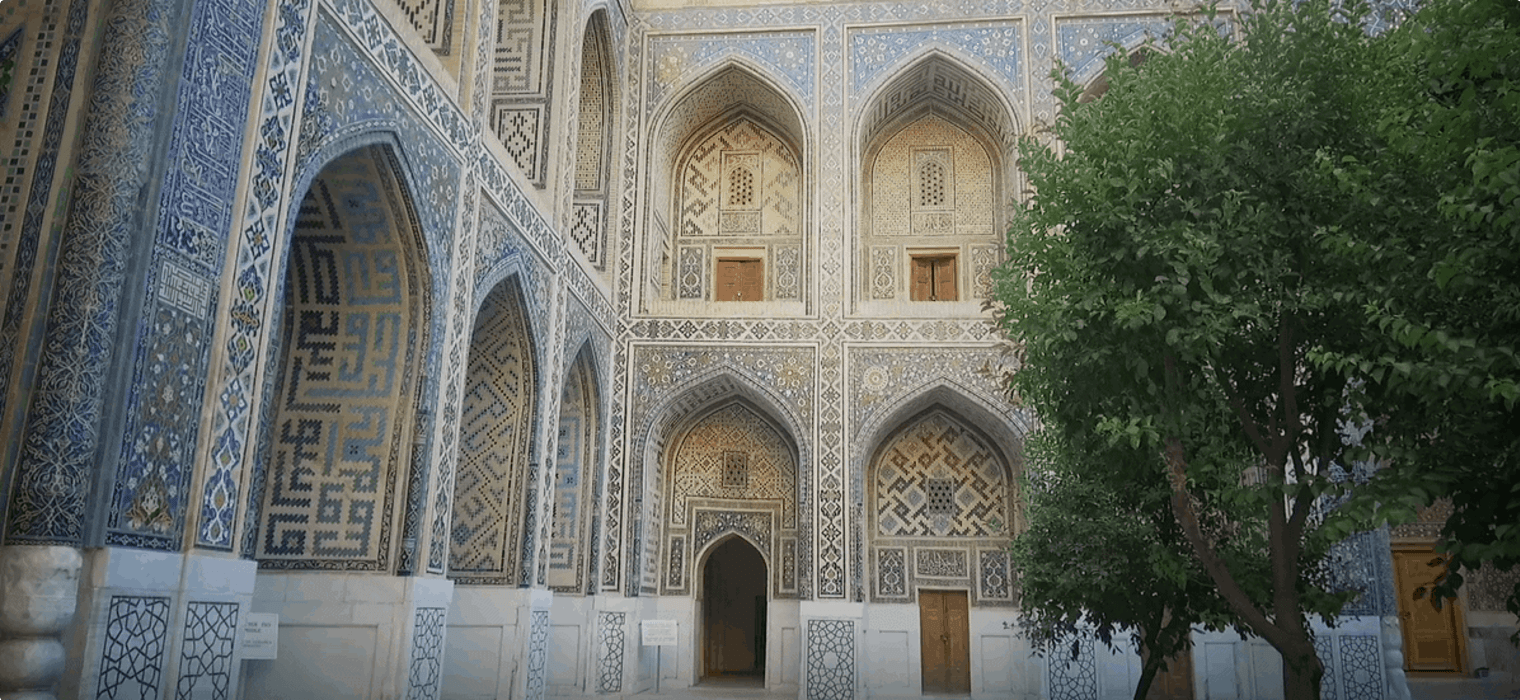
Turkmenistan: a journey for the curious
Brimming with a vibrant population of around 5 million people, Turkmenistan is hospitable and welcoming to tourists, despite its history of political problems. Its vast landscape is mostly desert, with oases of intense agriculture, mountainous ranges and ancient ruins, strewn across its lands. Turkmenistan is mysterious, evocative, and ready to be discovered. Its capital, Ashgabat, attracts most of the country’s visitors. This bold city rises out of the dry earth and makes for a strange juxtaposition with the surrounding regions. In fact, Turkmenistan is a land of juxtapositions: a crossroads of civilisations, and a peculiar mix of tradition and industry, buoyed by the riches of its natural resources. In this article, one of a series on the ‘Stans (read about Uzbekistan here), we provide insights into this secretive state. Of course, the only way to truly understand Turkmenistan is to visit for yourself…
An overview of Turkmenistan
The mighty Amu Darya, or Amo River, roughly traces Turkmenistan’s northern border. It bisects Turkmenistan from Uzbekistan, as well as part of Afghanistan to its south east. To the south lies Iran, while to the west, Turkmenistan shares with Kazakhstan the eastern shores of the landlocked Caspian Sea.
Like its northern neighbours, Turkmenistan was part of the Persian Empire influenced by Alexander the Great, the Arab conquest, the Seljuks, the Mongols and the Russians. It is peopled by a mixture of nomadic tribes thought to be from the Altay mountains in western Mongolia. These impressive people adapted their habits to living in oases around the Kara-Kum Desert that dominates some 90% of the country.
A brief history of Turkmenistan
Turkmenistan’s written history began with its annexation by the Achaemenid Empire of Ancient Iran. Prior to this, it was inhabited by Indo-Iranians. In the 8th century AD, Oghuz tribes moved from Mongolia into what is now Central Asia. These Turkic-speaking people formed the ethnic basis of the modern population in Turkmenistan. By the 10th century, they were under the dominion of the Seljuk Empire, and the Turkmen, as they were called, played an important role in spreading the culture westward.
By the 12th century, Turkmen overthrew the Seljuk Empire. But as the Mongols advanced in the following century, they were scattered southward. New tribal groups formed throughout the sixteenth to eighteenth centuries. These independent tribes were feared by their neighbours, and made formidable foes.
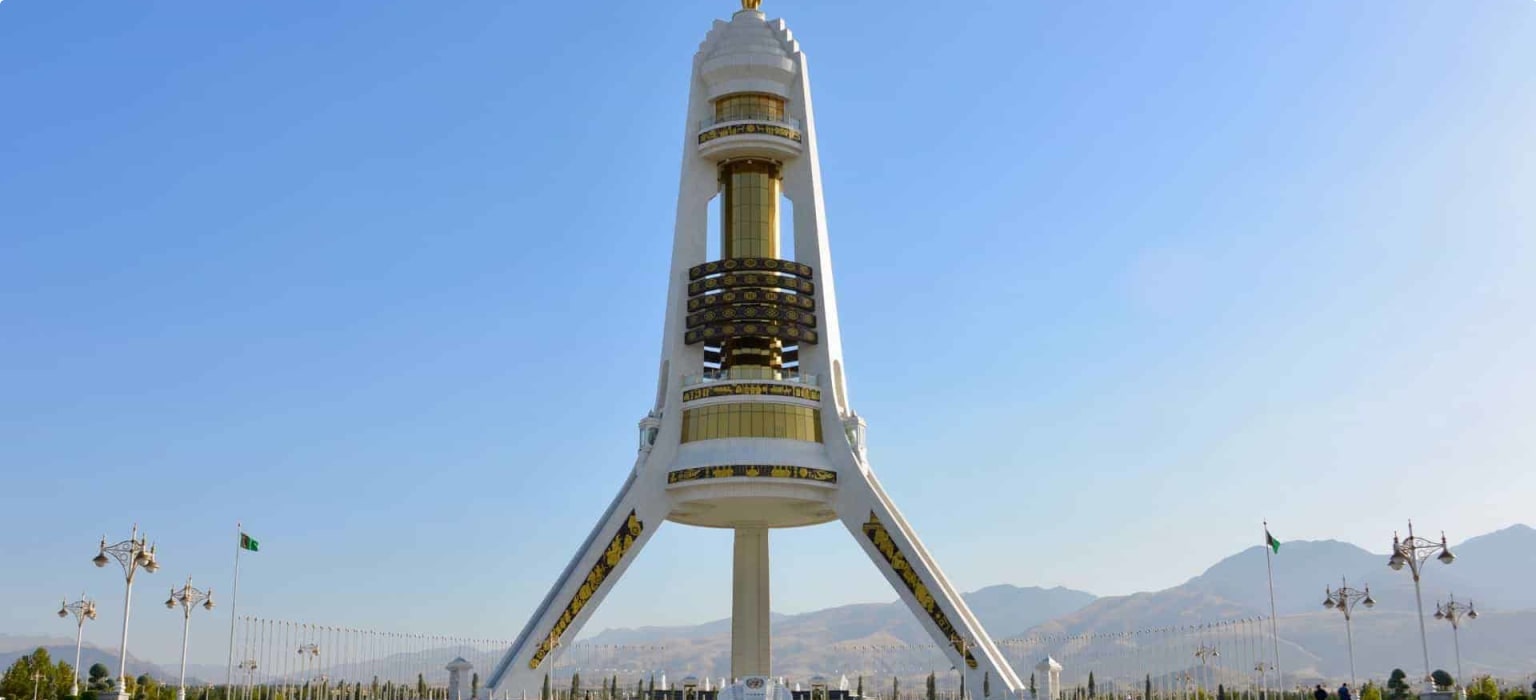
The arrival of Russia
Come the 19th century, however, the territory began to be invaded by the Russians. They systematically overcame all resistance in the region, culminating in the Battle of Geok Tepe in 1881. Turkmenistan and adjoining Uzbek territory was soon annexed into the Russian Empire.
As Russia joined World War I, the Central Asia region rallied to form the Basmachi Rebellion against the Soviet Union. However, the nomadic lifestyle of the Turkmen was destroyed by the Soviet’s agricultural practices. Moscow soon controlled political life here. The resistance was not helped by the sudden death of two thirds of the population of Ashgabat. They were killed by a major earthquake in 1948.
Declaration of Sovereignty
In the next half-century, Turkmenistan was largely cut off from the rest of the world as the Soviet Union continued to dominate the region. It was not until 1990 that the Supreme Soviet of Turkmenistan declared sovereignty. They were ill prepared for independence, but a national referendum confirmed this course of action. The then-communist leader Saparmurat Niyazov preferred to preserve the Soviet Union, but conceded to the majority’s wishes. He retained his role as leader and replaced communism with the “cult of personality”. He was an eccentric and bombastic leader, and you can read more about his strict (and downright strange) dictates here.
The rise of Niyazov
Thanks to a referendum and legislation changes, Niyazov eliminated the need for reelection, meaning he could rule indefinitely. He frequently purged Turkmenistan of organisations and officials he deemed “threatening” and limited participation in the international community. He maintained communications with the Taliban in Afghanistan during the late 1990s, and offered limited support to the military campaign against it following the September 11 attacks.
A 2002 assassination attempt saw him amp up security even further, and he placed heavy restrictions on the media. In 2005, he closed all hospital outside of the capital Ashgabat, as well as rural libraries. This escalated further in 2006 as he diminished economic output outside of the oil and gas sector and further withdrew from international organizations. When he died unexpectedly later that year, he left a vacuum of power. Deputy Prime Minister Gurbanguly Berdimuhamedow stepped in to take his place, and was reelected in 2012 with a 97% majority. The legacy of Niyazov continues to be felt in Turkmenistan.

A trail through Turkmenistan
To travel through Turkmenistan is to step through time. Its stories are told through its architecture and surreal monuments, and as world travellers, it is important to ask questions as we seek to understand the far-flung cultures of the earth.
Old Urgench: a city of ruins
Konye-Urgench (also known as Old Urgench) is a must-visit for any travellers to Turkmenistan. This UNESCO World Heritage Listed site was once the capital of the ancient nation Khwarezm. Abandoned in the eighteenth century, it has been left relatively untouched since.
A ruined minaret (tower) is located here in Konye-Urgench. Called the Mamun Minaret, evidence suggests it was built in 1011, prior to the arrival of the Mongols. Visible today are the stone bases of wooden columns.
Other historic artifacts in this region include the Sultan Tekesh Mausoleum, a beautiful monument distinguished by its conical turquoise dome. Tekesh was the leader of the Khwarezm Empire in the late 12th century. His remains are said to be buried here, though no tomb has been found.
Konye-Urgench is also home to the Kutlug-Timur Minaret, one of the tallest minarets in Central Asia. It looms some 60 metres, and is thought to have been constructed as early as the 11th century.
The Il-Arslan Mausoleum is the ancient city’s oldest standing monument. It is a cuboidal structure topped by a faceted, conical roof, and it is decked in intricate, geometric patterns and motifs.
A tour of Konye-Urgench will yield insights into Turkmenistan’s distant past, and reward travellers with an interest in ancient history, architecture and art.
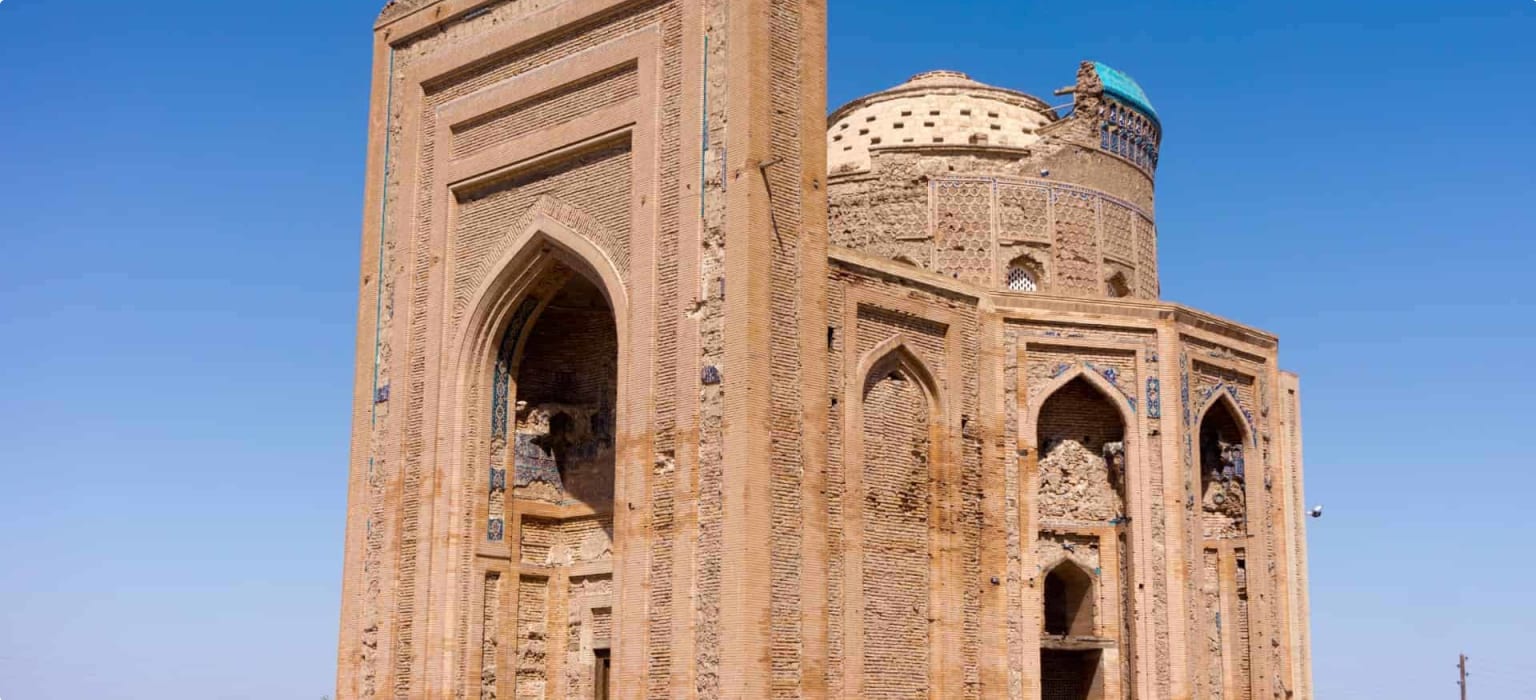
The city of Ashgabat
Turkmenistan’s unique capital, Ashgabat, boasts the world’s highest concentration of marble buildings. These bold, white structures make it a stunning city to visit. The urban landscape tells of the country’s rich natural resources, used to fund the monuments to past rulers. There remain traces of Saparmurat Niyazov, the country’s previous president, including a large, gold statue of the leader replete with a cape. The statue rotates, so that the former president always faces the sun. Current president, Gurbanuly Berdimuhamedow, had it relocated to the city’s edge. An equally garish gold statue depicts him astride a horse. (The horse is a beloved emblem of Turkmenistan, where an elite racehorse called the Akhal-Teke is bred. Read about Berdimuhamedow’s recent attempts to have the breed World Heritage listed here).
This 2013 article from The Atlantic offers an overview of some of the marble structures that are well worth visiting.
Turkmenistan today
Turkmenistan is still home to one of the world’s more oppressive regimes. Berdimuhamedow has ruled over the country since 2007 and, in 2016, increased presidential term limits from five to seven years, and rescinded the law that forbade a sitting president from being over 70 years old, allowing him to remain in the position indefinitely. Additionally, the government continues to monitor and control all media and internet use. According to Transparency International, Turkmenistan is the world’s thirteenth most corrupt country. This dictatorship, like the previous one, depends on a cult of personality.

Merv: the “Mother of the World”
Evidence indicates Merv was once the world’s largest city. Located in Turkmenistan at the crossroads of trade routes, it rose up out of a green oasis, offering a welcome respite from its vast desert surrounds. Historians believe Merv was inhabited from the sixth century BC, but there are traces of life here from as far back as the 3rd millennium BC. In Merv, the Murghab River filtered across a network of canals, and the land is thought to have been fertile and green with trees. Merv was a major stop on the Silk Road, the region boasting production of high quality cotton favoured by textile dealers. Once a metropolis, its bare bones yield clues into the extent of the city’s cultural and religious significance.
A history of the city
Founded under the Archaemenid Empire, traces of this original city are buried deep beneath strata. Merv received a legendary visit from Alexander the Great, and it earned the name Alexandria for a time. After his death it succeeded through the Seleucid, Bactria, Parthia and Kushan dynasties. It was once a major centre for Buddhist teaching.
The Sassanid Ardashir I took Merv around 220–240 AD, and its believed that during this period, a number of different religions coexisted.
The arrival of Arabic influence
Arab influences arrived in the 7th century AD, after the death of the last Sassanian ruler. 50,000 Arabs established a colony here, and from this base took power of large parts of Central Asia.
The Seljuks, Oghuz Turks, took over Merv in the 11th century, and during this period the city expanded to its greatest size. It was apparently referred to as “the mother of the world”, and hosted an impressive market that attracted people from all over.
The fall of Merv
The Mongols made their presence known in 1221, when the son of Genghis Khan was admitted to Merv. The city was captured and its citizens brutally murdered according to historic accounts. Merv’s prosperity fell. Though archaeological evidence indicates the city was rebuilt, it never again reached the heights of the 11th century.
After this, Merv moved from being a seat of a Christian archbishop, to the Uzbeks to the Persians and of course, eventually to the Russians in the 19th century. The Russians organised the first official excavation of Merv in 1885; the first professional dig followed in 1890.
The remains
The remains consists of discrete, but closely arranged walled cities built within different eras. Merv is UNESCO World Heritage Listed, deemed “to bear exceptional testimony to the civilizations of Central Asia over several millennia”. The remains must be experienced with the expertise of a guide who can bring the scene to life for you. With some guidance and imagination, you will be able to piece together parts of a magnanimous puzzle. You may even be able to hear the faint music and scuffle of the old marketplace, carried on the desert wind.
In the meantime, Kanishk Tharoor does a good job of imagining the footsteps of a typical ancient traveller arriving on the banks of the Murghab from the Silk Road…
Travelling in Turkmenistan
Because Central Asia can be politically unstable, it’s worth checking the Australian government’s Smart Traveller website, which will inform you of appropriate precautions to take before visiting. At the time of writing, it simply suggests that, when in Turkmenistan, you exercise normal precautions, as you would in Australia. However, there is a Do Not Travel warning in place for the Turkmenistan/Afghanistan border.
You require a Visa in order to enter Turkmenistan, and it can be easier to be granted one if you are on a guided tour.
If you’re interested in learning more about the recent history of Turkmenistan, this 2007 New Yorker article by Paul Theroux provides further insights into this fascinating part of the world. Stay tuned for our upcoming articles on the ‘Stans (article on Uzbekistan available here).

Small group tours for seniors
Odyssey Traveller is famous for our small groups, and we average eight participants per tour. Our maximum group size is eighteen people, which ensures quality, flexibility and care that is tailored to our clients. We specialise in small group tours for the senior traveller who is seeking adventure or is curious about the world we live in. Typically, our clients begin travelling with us from their mid 50’s onward. But be prepared to meet fellow travellers in their 80s and beyond! Both couples and solo travellers are very welcome on our tours.
At Odyssey, we are interested in stories. Our tours are designed around what makes cities unique, and we approach history from specific and informed angles. If you would like to visit Turkmenistan, check out our 27 day Tour of Uzbekistan, Kazakhstan, Kyrgyzstan, and Turkmenistan, an adventurous trek across Central Asia. You might also be interested in our popular Silk Road specialist small group history tour, which takes in the diverse cities of the Silk Road from eastern China to Tashkent, Uzbekistan. For more on our varied tours of Asia and the Orient, click here.
About Odyssey Traveller

Odyssey Traveller is committed to charitable activities that support the environment and cultural development of Australian and New Zealand communities. Accordingly, we are pleased to announce that since 2012, Odyssey has been awarding $10,000 Equity & Merit Cash Scholarships each year. We award scholarships on the basis of academic performance and demonstrated financial need. We award at least one scholarship per year. We’re supported through our educational travel programs, and your participation helps Odyssey achieve its goals.
For more information on Odyssey Traveller and our educational small group tours, visit our website. Alternatively, please call or send an email. We’d love to hear from you!
Related Tours
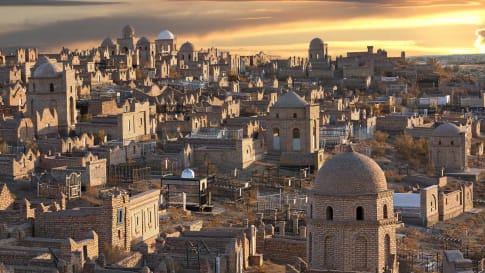
27 days
May, AugThe Stans Small Group Tour: Uzbekistan, Kazakhstan, Kyrgyzstan, and Turkmenistan
Visiting Kazakhstan, Kyrgyzstan
This Odyssey is designed for the adventurous traveller, a couple or solo traveller on a small group tour who is prepared for a range of accommodation styles, for walking excursions and some long travel days in 3 Central Asian countries. The program combines experiences with great scenery, ancient and modern histories, family visits and lifestyles that differ dramatically.
From A$16,750 AUD
View Tour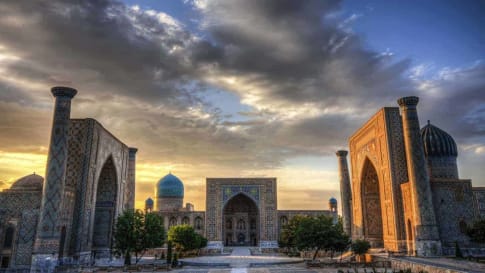
29 days
Aug, May, SepTravel on the Silk Road with Odyssey Traveller | Small Group Tour for Seniors
Visiting China, Kyrgyzstan
The Silk Road is an ancient trade route linking China and Imperial Rome through Central Asia. Few areas in the world remain as unexplored or offer such richness in terms of ancient and modern history, culture, and scenic diversity as Central Asia. Our Small group Silk road tours itinerary explores the Road through remote deserts and mountainous environments as we visit key sites between Xi'an and Bukhara.
From A$18,750 AUD
View Tour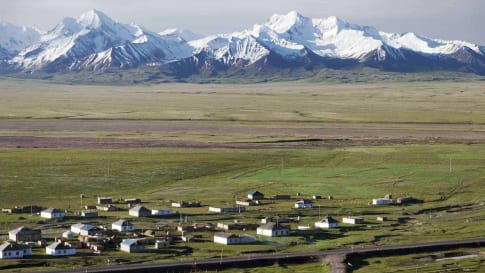
7 days
Jun, SepTajikistan Tour | Central Asian Small Group Tour
Visiting Tajikistan
We explore the country’s astonishing scenery and monuments. Tajikistan is the smallest of the 5 ‘Stans and is also the most mountainous. On our small group tour for couples and solo travelers we encounter many ranges and mountain chains where we reach well over 3,000 metres above sea level while crossing passes.
From A$4,650 AUD
View Tour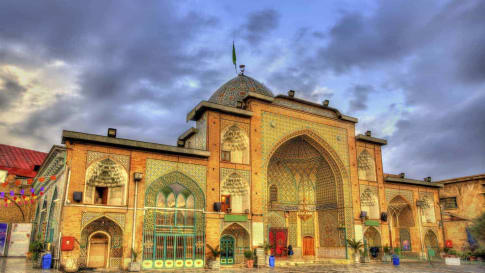
17 days
Sep, Nov, AprIran Culture and History Escorted Small Group Tour for seniors
Visiting Iran
Unlike its neighbours to the west and northwest, Iran had not adopted Christianity and it was the explosive spread of Islam and its ready adoption, without the Arabic language or customs, which helped unite the culture and greatly enrich Persian heritage. This small group tour program includes the great cities of Iran, historic sites, mosques, gardens, bazaars and teahouses for couples and solo travellers.
From A$11,825 AUD
View Tour